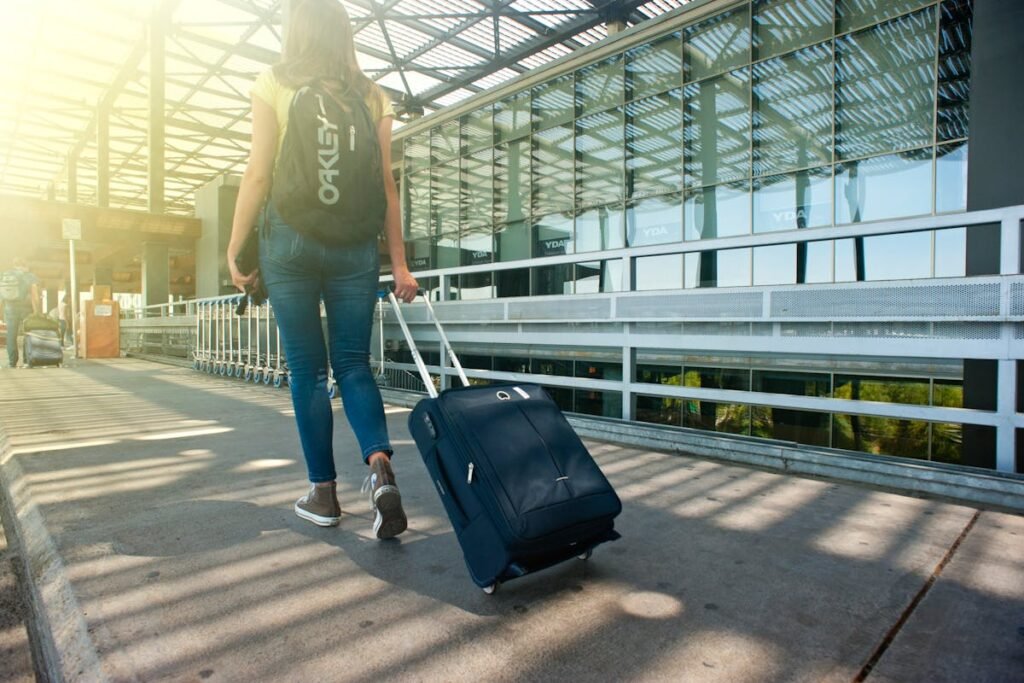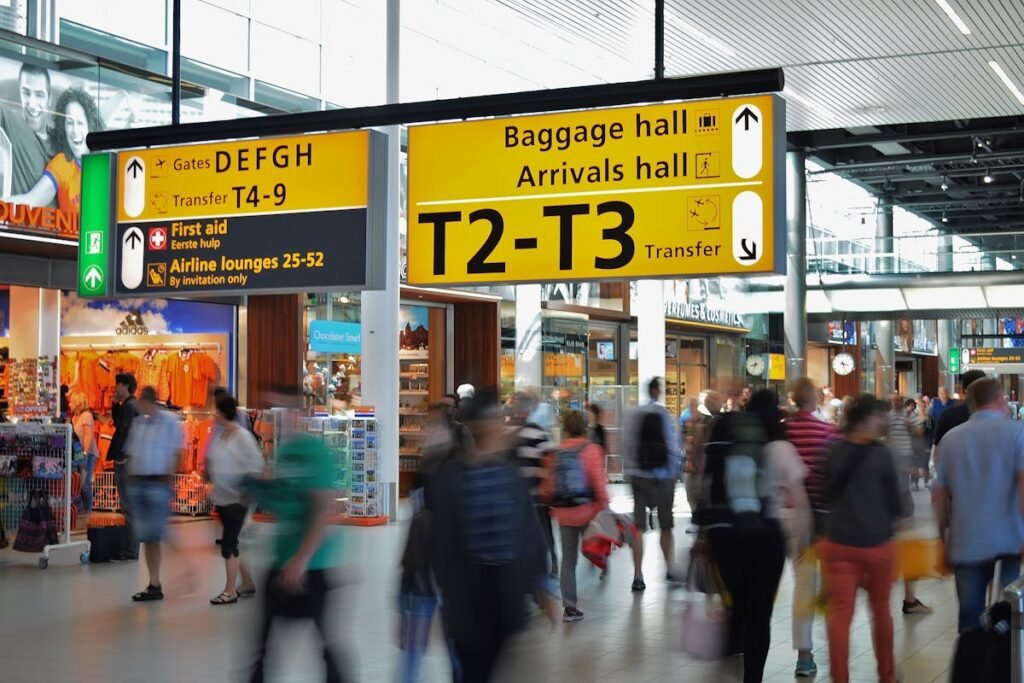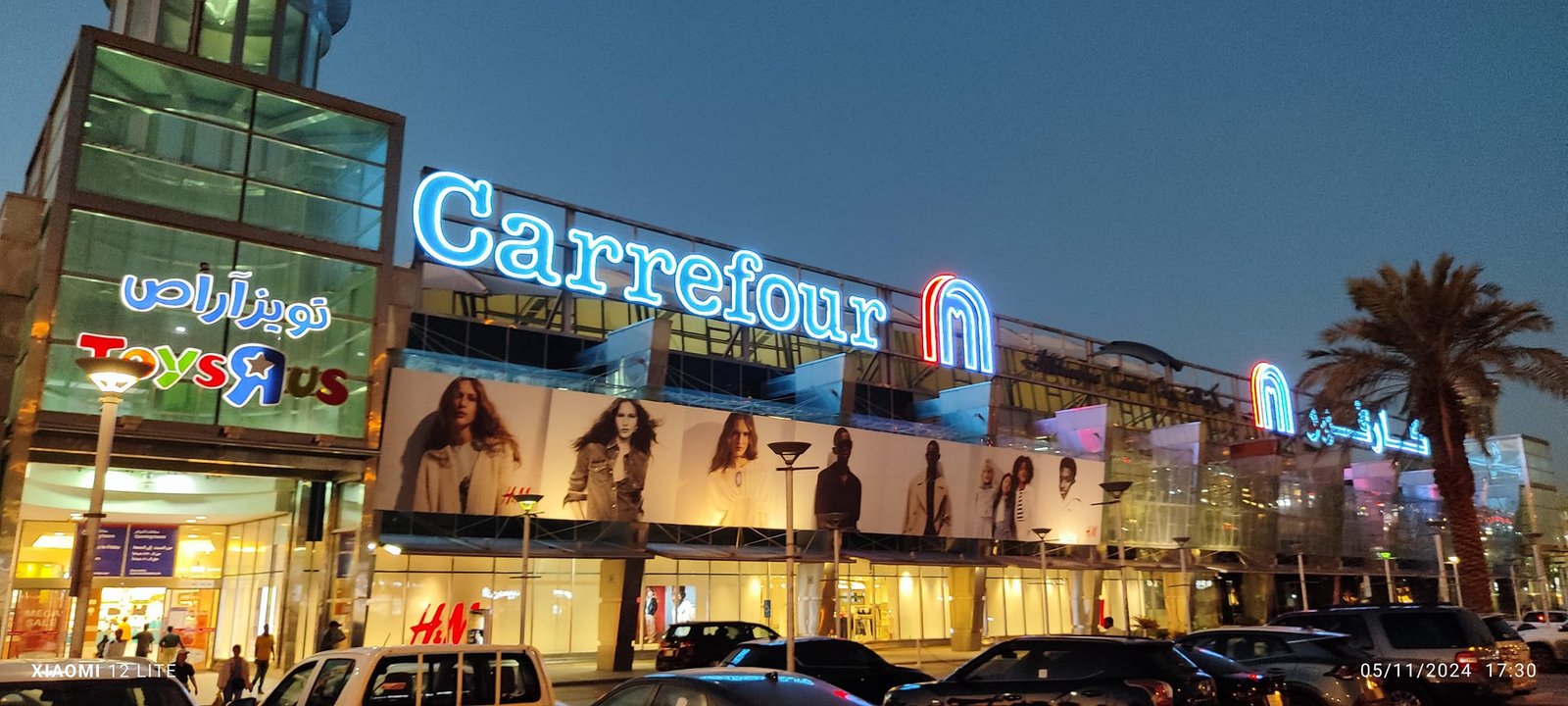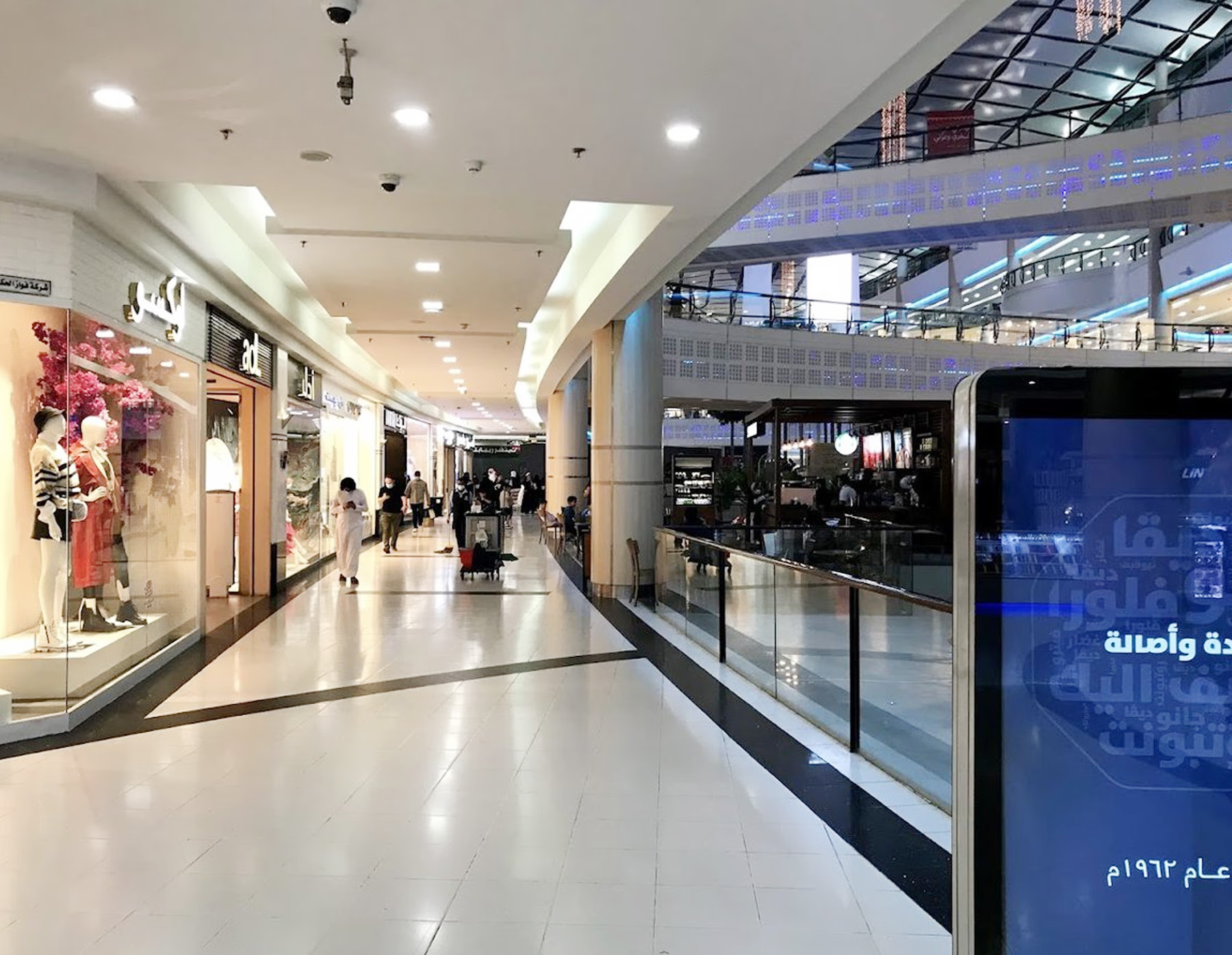For international travelers, duty-free shopping represents one of the most enticing perks of crossing borders. The allure of purchasing luxury goods, spirits, cosmetics, and more without the burden of local taxes and import duties has transformed airport terminals and international borders into shopping havens. But navigating the world of duty-free shopping requires knowledge, strategy, and a keen eye for genuine bargains.
In this comprehensive guide, we’ll explore everything you need to know about duty-free shopping – from understanding the fundamental concepts to implementing expert strategies that maximize your savings. Whether you’re a frequent flyer or an occasional international traveler, this guide will help you transform your duty-free shopping experience from casual browsing to strategic purchasing.
Understanding Duty-Free Shopping: The Basics

What Exactly Is Duty-Free Shopping?
Duty-free shopping refers to the purchase of goods without paying certain local taxes or import duties that would normally be applied in the country where the items are sold. These tax exemptions are possible because the merchandise is intended to be taken out of the country, thus the term “duty-free.”
The concept originated in Shannon, Ireland in 1947, and has since evolved into a global retail phenomenon worth billions of dollars annually. Today, duty-free shops can be found in international airports, cruise ships, international train stations, and border towns around the world.
How Duty-Free Shopping Works
The mechanics of duty-free shopping are straightforward but governed by specific regulations:
- International Travel Requirement: To shop duty-free, you must be traveling internationally. Domestic travelers are generally not eligible for duty-free purchases.
- Purchase Timing: Most duty-free purchases are made when leaving a country (on departure), though some airports also offer arrival duty-free shopping.
- Verification Process: You’ll need to show your boarding pass or other travel documents to prove your international traveler status.
- Customs Limitations: While purchases are tax-free at the point of sale, they may still be subject to customs duties and taxes upon entry to your destination country if they exceed allowance limits.
- Sealed Packaging: Duty-free purchases are typically sealed in tamper-evident bags with receipts attached, especially for liquids that need to pass through security for connecting flights.
Tax-Free vs. Duty-Free: Understanding the Difference
Many travelers confuse tax-free and duty-free shopping, but they represent different concepts:
| Duty-Free Shopping | Tax-Free Shopping |
|---|---|
| Available only at international borders, airports, and other transit points | Available throughout a country at participating retailers |
| Exempts goods from import duties and taxes | Allows foreign visitors to claim refunds on VAT or sales tax paid |
| Savings realized immediately at purchase | Requires processing refund claims, often when leaving the country |
| Limited to specific duty-free retailers | Available at many regular retail stores that participate in tax-free programs |
| Typically offers a narrower product selection | Offers the full range of products available in regular retail |
Understanding this distinction can help you maximize savings by utilizing both options when available during your international travels.
What Can You Buy Duty-Free?
Most Common Duty-Free Categories
Duty-free shops offer a wide range of products, but certain categories dominate the market due to their significant tax savings potential:
- Alcohol and Spirits: Premium spirits, wines, and champagnes are among the most popular duty-free purchases, with potential savings of 25-30% compared to domestic prices in high-tax countries.
- Tobacco Products: Cigarettes, cigars, and other tobacco items often see substantial markups from taxes, making duty-free purchases attractive to smokers (though health warnings still apply).
- Perfumes and Cosmetics: Luxury beauty brands like Chanel, Dior, and Estée Lauder are staples in duty-free shops, often with exclusive travel sets and limited editions.
- Luxury Accessories: Watches, jewelry, sunglasses, and leather goods from premium brands are frequently available with significant savings.
- Chocolates and Confectionery: Premium chocolates and sweets make popular gifts and souvenirs, with brands like Toblerone, Godiva, and Lindt featuring prominently.
- Electronics: Cameras, headphones, smartphones, and other gadgets are increasingly common in duty-free shops, though savings vary widely.
Best Value Duty-Free Purchases
Not all duty-free items offer equal value. Here’s a breakdown of which categories typically provide the best savings:
High-Value Items:
- Premium Spirits: Especially whisky, cognac, and other aged spirits that carry high taxes in many countries
- Designer Fragrances: Particularly gift sets and larger sizes
- Luxury Watches: Especially Swiss brands that maintain strict pricing globally
Moderate Value:
- Cosmetics and Skincare: Particularly from luxury brands
- Sunglasses: Designer brands often offer 10-20% savings
- Tobacco: Significant savings in countries with high tobacco taxes
Limited Value:
- Electronics: Often priced similarly to regular retail, especially in tech-savvy markets
- Candy and Snacks: Convenience rather than savings
- Fashion Clothing: Limited selection and modest discounts
Pro Tip: Items with the highest domestic taxes generally offer the best duty-free savings. Research the tax rates in your home country to identify potential bargains.
Duty-Free Allowances and Restrictions
Understanding Customs Allowances
Every country sets limits on how much merchandise travelers can bring in without paying additional duties and taxes. These are known as “duty-free allowances” or “customs exemptions.”
Common Duty-Free Allowances by Region:
United States:
- Alcohol: 1 liter per adult (21+)
- Tobacco: 200 cigarettes or 100 cigars
- General merchandise: $800 USD per person
- Additional merchandise between $800-1,800 USD taxed at a flat 3% rate
European Union:
- Alcohol: 4 liters of wine AND 16 liters of beer AND 1 liter of spirits over 22% alcohol (or 2 liters under 22%)
- Tobacco: 200 cigarettes OR 100 cigarillos OR 50 cigars OR 250g of tobacco
- Other goods: Up to €430 for air and sea travelers (€300 for other travelers)
United Kingdom:
- Alcohol: 18 liters of still wine AND 4 liters of spirits or 9 liters of fortified wine or sparkling wine
- Tobacco: 200 cigarettes OR 100 cigarillos OR 50 cigars OR 250g of tobacco
- Other goods: £390 per person
Australia:
- Alcohol: 2.25 liters per adult (18+)
- Tobacco: 25 cigarettes or 25g of tobacco products
- General goods: AUD$900 per adult, AUD$450 for children
Middle East (varies by country):
- Many Middle Eastern countries have strict restrictions on alcohol and pork products
- The UAE allows non-Muslims to import limited quantities of alcohol (typically 4 liters of alcohol OR 24 cans of beer)
- Saudi Arabia prohibits alcohol importation entirely
Navigating Restrictions and Prohibited Items
Beyond quantity limits, travelers should be aware of prohibited and restricted items that cannot be brought into certain countries regardless of duty-free status:
- Agricultural Products: Many countries restrict or prohibit fresh fruits, vegetables, plants, seeds, and certain food items to prevent the spread of pests and diseases.
- Wildlife Products: Items made from endangered species, including ivory, reptile skins, and certain corals, are generally prohibited worldwide.
- Counterfeit Goods: Fake designer items are illegal in most countries, even for personal use.
- Medications: Prescription drugs may require documentation, and some medications legal in one country may be controlled or prohibited in others.
- Cultural Artifacts: Antiques and cultural items may require export permits from the country of origin.
- Weapons and Ammunition: Heavily restricted or prohibited in most countries.
Important: Regulations change frequently. Always check the latest customs information for your destination country before making significant duty-free purchases.
Strategies for Maximizing Duty-Free Savings

Before You Travel
Preparation is key to successful duty-free shopping:
- Research Price Points: Before your trip, check prices of items you’re interested in at home retailers. Not everything in duty-free shops is a bargain, and some items may actually cost more than at regular stores.
- Download Duty-Free Apps: Applications like Duty Free Hunter, App in the Air, or specific airport shopping apps can help you compare prices and find exclusive offers.
- Check Allowances: Verify the duty-free allowances for your destination country to avoid unexpected taxes or confiscation.
- Consider Your Itinerary: If you’re visiting multiple countries, plan your duty-free shopping for the location with the best prices for your desired items.
- Join Loyalty Programs: Many duty-free retailers offer loyalty programs that provide additional discounts, exclusive offers, or points for frequent shoppers.
During Your Journey
Strategic shopping during your travels can maximize savings:
- Compare Prices Between Terminals: In larger airports, duty-free prices can vary between different terminals or even between shops in the same terminal.
- Look for Promotions: Duty-free shops frequently run special promotions, particularly during holiday seasons.
- Consider Currency Fluctuations: Exchange rates can significantly impact the value of your purchases. Use a currency converter app to calculate the true cost in your home currency.
- Ask About Exclusive Products: Many brands create travel-exclusive editions or gift sets only available in duty-free shops.
- Negotiate on High-Value Items: In some locations, particularly in Asia and the Middle East, negotiation on luxury goods may be possible.
- Use Credit Cards with No Foreign Transaction Fees: Avoid unnecessary charges that can erode your duty-free savings.
Best Airports for Duty-Free Shopping
Some airports are renowned for their exceptional duty-free shopping experiences:
Dubai International Airport (DXB)
- Specialties: Gold, electronics, premium spirits
- Unique Features: Over 38,000 square meters of retail space
- Best Buys: Middle Eastern perfumes, gold jewelry, premium spirits
Singapore Changi Airport (SIN)
- Specialties: Electronics, cosmetics, local specialties
- Unique Features: Pre-order service for collection on arrival or departure
- Best Buys: Electronics, Asian beauty brands, Singapore-exclusive items
Incheon International Airport (ICN), South Korea
- Specialties: Korean cosmetics, electronics, fashion
- Unique Features: Korean cultural products and experiences
- Best Buys: K-beauty products, Korean ginseng, electronics
London Heathrow Airport (LHR)
- Specialties: British brands, luxury fashion, fine wines
- Unique Features: Personal shopping service by appointment
- Best Buys: British heritage brands, whisky, luxury accessories
Hong Kong International Airport (HKG)
- Specialties: Electronics, watches, Chinese luxury goods
- Unique Features: Price guarantee program
- Best Buys: Watches, Chinese tea and spirits, electronics
Common Duty-Free Shopping Mistakes to Avoid
Even experienced travelers make these common errors:
1. Assuming All Duty-Free Items Are Bargains
The biggest misconception about duty-free shopping is that everything is automatically cheaper. In reality, base prices may be higher to offset some of the tax savings, and not all items offer significant discounts.
Solution: Always compare with home prices before purchasing, and focus on heavily taxed items like alcohol and tobacco for the best savings.
2. Ignoring Customs Allowances
Exceeding your duty-free allowance can result in unexpected taxes, fees, or even confiscation of goods upon arrival.
Solution: Research allowances for your destination country before shopping, and keep track of your purchases to stay within limits.
3. Shopping at the First Duty-Free Store You See
Prices and selection can vary significantly between different duty-free shops, even within the same airport.
Solution: If time permits, browse multiple shops before making significant purchases.
4. Forgetting About Liquid Restrictions for Connecting Flights
If you have a connecting flight, duty-free liquids must be sealed in tamper-evident bags with receipts visible to pass through security.
Solution: Inform the sales assistant if you have a connecting flight, and ensure purchases are properly sealed with receipts attached.
5. Buying Items You Don’t Need
The excitement of potential savings can lead to impulse purchases.
Solution: Make a shopping list before your trip and stick to it, focusing on items you genuinely need or have researched.
6. Overlooking Weight and Space Limitations
Duty-free purchases add weight and bulk to your luggage, potentially causing overweight baggage fees that negate your savings.
Solution: Consider your luggage allowance before making bulky or heavy purchases, especially for items like spirits.
Duty-Free Shopping Beyond Airports
While airports dominate the duty-free landscape, other venues offer tax-free shopping opportunities:
Cruise Ships
Cruise ships operate in international waters, allowing them to sell duty-free merchandise:
- Advantages: Competitive pricing, convenient shopping during sea days
- Selection: Typically focused on jewelry, watches, perfumes, and spirits
- Considerations: Limited selection compared to major airports, but often with exclusive cruise-only promotions
Border Shops
Many international borders feature duty-free shops catering to land travelers:
- Locations: US-Canada border, borders between EU and non-EU countries, and other international crossings
- Advantages: Often more spacious than airport shops with competitive pricing
- Considerations: You must be crossing the border to qualify for duty-free purchases
Downtown Duty-Free
Some destinations offer “downtown duty-free” shopping, allowing tourists to shop tax-free in city centers:
- How It Works: Purchases are delivered to the airport or port for collection upon departure
- Advantages: More relaxed shopping experience than rushed airport shopping
- Popular Locations: South Korea, Thailand, Singapore, and various Caribbean islands
Online Duty-Free
The digital evolution of duty-free shopping allows for pre-ordering:
- Process: Order online before travel and collect at the airport
- Benefits: Skip the lines, guarantee product availability, sometimes receive additional discounts
- Popular Platforms: World Duty Free Reserve & Collect, Heinemann Pre-Order, Dubai Duty Free Click & Collect
Luxury Goods and Duty-Free: A Special Focus

Luxury items deserve special consideration in duty-free shopping due to their high value and potential for significant savings:
Watches and Jewelry
- Potential Savings: 10-20% compared to domestic retail prices
- Best Airports: Geneva, Hong Kong, Dubai, Singapore
- Tips:
- Verify authenticity through official documentation
- Check if international warranty is included
- Consider VAT refund options in addition to duty-free savings
Designer Handbags and Accessories
- Potential Savings: 10-15% on global brands like Louis Vuitton, Gucci, and Prada
- Best Locations: Paris CDG, London Heathrow, Hong Kong, Seoul Incheon
- Considerations:
- Some premium brands maintain strict global pricing with minimal discounts
- Limited edition or airport-exclusive designs may offer better value
- Authentication cards and proper packaging are essential
Premium Spirits and Rare Wines
- Potential Savings: 25-40% on premium spirits and wines
- Best For: Aged whisky, cognac, champagne, and limited editions
- Strategy:
- Focus on high-end or rare bottles not readily available at home
- Look for travel-exclusive editions from major brands
- Consider collectible releases that may appreciate in value
The Future of Duty-Free Shopping
The duty-free industry continues to evolve with several emerging trends:
Digital Integration
- Mobile Pre-ordering: Increasing adoption of apps for browsing and pre-purchasing
- Virtual Try-On: AR/VR technology allowing travelers to virtually sample products
- Digital Payment Solutions: Contactless and mobile payment options streamlining purchases
Experiential Retail
- Product Sampling: More opportunities to try before buying, especially for spirits and cosmetics
- Brand Activations: Pop-up experiences and limited-time brand showcases
- Personalization: Custom engraving, monogramming, and personalized products
Sustainability Focus
- Eco-Friendly Products: Growing selection of sustainable and environmentally conscious brands
- Reduced Packaging: Initiatives to minimize excessive packaging
- Carbon Offset Programs: Options to offset the environmental impact of purchases
Expanded Product Categories
- Wellness Products: Growing presence of health supplements, CBD products (where legal), and wellness devices
- Experiential Offerings: Digital services, experiences, and even NFTs entering the duty-free space
- Local Artisanal Products: Increased focus on authentic local specialties and crafts
Duty-Free Shopping by Traveler Type
Different travelers have different duty-free priorities:
For Business Travelers
- Focus On: Practical luxury items, gifts for clients or colleagues, premium spirits
- Strategy: Pre-order to save time, utilize frequent flyer status for additional discounts
- Best Buys: Quality headphones, premium pens, distinctive spirits, elegant accessories
For Family Travelers
- Focus On: Souvenirs, treats, practical travel items
- Strategy: Set a budget per family member, involve children in making small selections
- Best Buys: Destination-themed toys, international candy and chocolates, travel games
For Luxury Shoppers
- Focus On: High-end brands, exclusive editions, investment pieces
- Strategy: Research limited editions, utilize personal shopping services
- Best Buys: Designer accessories, premium watches, rare spirits, luxury cosmetics sets
For Budget Travelers
- Focus On: Maximum value, practical items, affordable luxuries
- Strategy: Compare prices rigorously, focus on heavily taxed items
- Best Buys: Mid-range fragrances, local specialties, small luxury brand items
Customs Procedures and Declarations
Understanding customs procedures ensures a smooth arrival experience:
Declaring Your Purchases
- Know What to Declare: Any items exceeding your personal exemption must be declared.
- Complete Declaration Forms: Most countries require arriving passengers to complete customs declaration forms listing purchases.
- Keep Receipts Accessible: Have all receipts readily available to verify purchase values if questioned.
- Be Honest: Attempting to avoid duties by not declaring items can result in penalties, confiscation, and even entry refusal.
Paying Duties When Required
If your purchases exceed allowances:
- Calculation Methods: Duties are typically calculated as a percentage of the item’s value, varying by product category.
- Payment Options: Most customs facilities accept credit cards and major currencies for duty payments.
- Consolidating Exemptions: Some countries allow families traveling together to combine individual exemptions.
- Frequent Traveler Considerations: Be aware that some countries track duty-free allowances across multiple trips within a specific timeframe.
Conclusion: Making Duty-Free Work for You
Duty-free shopping can offer significant savings and access to exclusive products when approached strategically. By understanding the fundamentals, researching prices, knowing your allowances, and shopping selectively, you can transform duty-free shopping from a confusing maze of options into a rewarding part of your travel experience.
Remember that the best duty-free strategy is an informed one. Not everything is a bargain, but with the knowledge gained from this guide, you’ll be well-equipped to identify genuine savings opportunities and avoid common pitfalls.
Whether you’re seeking luxury goods at competitive prices, stocking up on premium spirits, or simply looking for unique souvenirs, duty-free shopping offers something for every international traveler. The key is to shop with purpose, compare prices diligently, and focus on categories where tax exemptions translate to meaningful savings.
Happy travels and successful duty-free shopping!
FAQs About Duty-Free Shopping
Q: Can I use duty-free allowances if I’m returning to my home country after a short trip?
A: Yes, most countries apply the same duty-free allowances regardless of how long you’ve been away, though some may have minimum trip duration requirements.
Q: Are duty-free prices the same worldwide?
A: No, prices vary significantly between locations due to operating costs, local competition, and regional pricing strategies.
Q: Can I purchase duty-free items on domestic flights?
A: Generally no. True duty-free shopping requires international travel, though some domestic flights offer tax-included shopping with similar products.
Q: What happens if my duty-free liquids are confiscated at a security checkpoint?
A: Unfortunately, confiscated items are rarely returned. Ensure liquids are properly sealed in tamper-evident bags with receipts visible for connecting flights.
Q: Can I consume duty-free alcohol on the plane?
A: Most airlines prohibit passengers from consuming their own alcohol onboard for safety and regulatory reasons.
Q: Do I need my passport to shop duty-free?
A: Yes, you typically need to show your passport and boarding pass to verify your international traveler status.
Q: Are there age restrictions for purchasing alcohol and tobacco duty-free?
A: Yes, duty-free shops adhere to the legal age restrictions of the country they’re located in, typically 18 or 21 for alcohol and tobacco.
Q: Can I get a refund if I change my mind about a duty-free purchase?
A: Refund policies vary by retailer. Some offer refunds with proper documentation, while others have no-refund policies for duty-free items.







